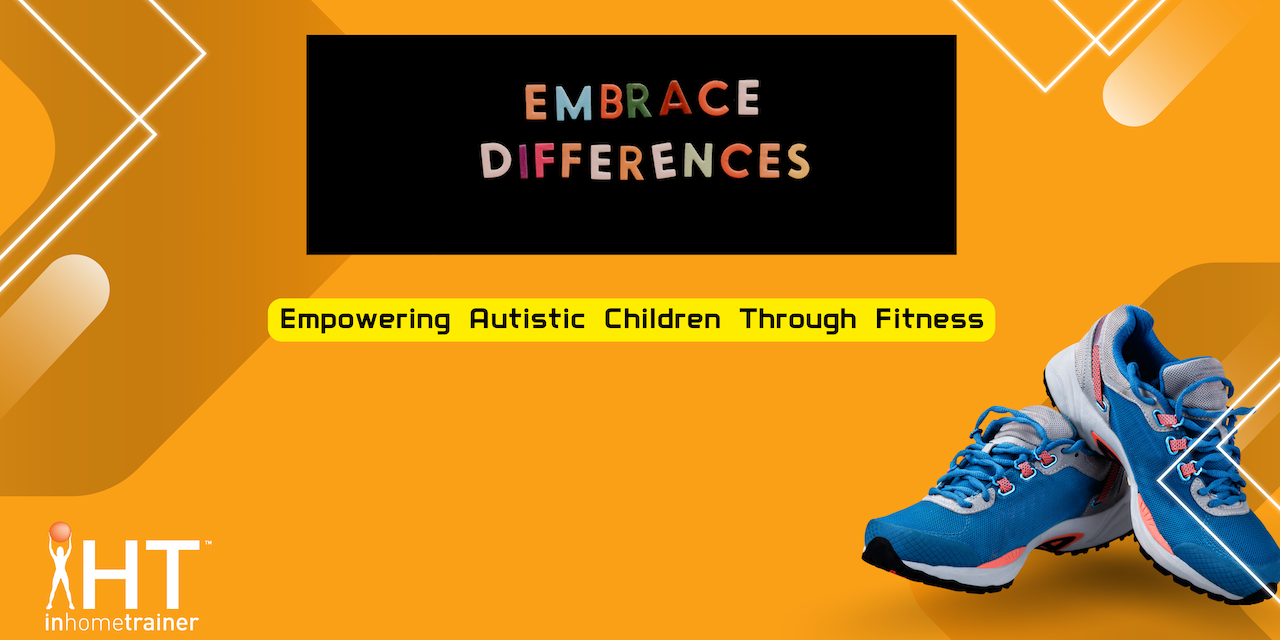Personal Training For Autism
I know firsthand the challenges an autistic child may face. Having a family member diagnosed with autism can be challenging. Still, with the right support system in place, we can significantly help children with autism by creating tailored exercise programs and offering customized support to meet their specific needs.
Over the past several years, our in-home personal training team has worked with many kids with ASD. (Autism spectrum disorder)
It should be noted Autism is categorized into three levels:
Level 1: Requiring support for social challenges.
Level 2: Requiring substantial support for communication difficulties.
Level 3: Requiring very substantial support due to severe impairments.
5 Ways Personal Training Can Help A Child With Autism
NOTE: Children with autism often face challenges with fitness and coordination due to several reasons:
1. Sensory Sensitivities:
Many children with autism have heightened sensory sensitivities, making specific movements, textures, or environments uncomfortable or overwhelming. This can deter them from participating in physical activities, and It’s common to see ASD children absent from team sports. In-home personal training helps children with autism develop safe exercise habits in the comfort of their home, reaping all the benefit of fitness and health.
2. Motor Planning Difficulties:
Some children with autism struggle with motor planning, which affects their ability to coordinate movements. Planning and executing complex physical activities can be particularly challenging. For example, some children may have difficulty coordinating how to kick a ball properly. With proper support in-home personal training can help with coordinating movements through physical acitivity.
3. Social Challenges
Autism can affect social skills, making it harder for children to engage in team sports or activities requiring cooperation and communication. Most of the kids we see in our home-training programs don’t participate in sports teams. Therefore it’s vital for them to get exercise through different outlets.
4. Communication Barriers:
Difficulties in verbal and nonverbal communication can make it challenging for these children to understand and follow instructions during group fitness activities. One-on-one in home personal training helps a child with autism learn fundamental exercise movements through repetition.
5. Repetitive Behaviors:
Children with autism often engage in repetitive behaviours. These behaviours may interfere with their engagement in varied physical activities, limiting their exposure to diverse fitness experiences. Personal training can actually help in this case.. A program focussed on repetitive and fun exercises changed every 4-6 weeks allows the child to progress.
Learn more about getting personalized help for your autistic child here
Now that you know more about personal training for autism, here is how to plan a fitness program.
1. Building Confidence and Self-Esteem
Success in physical activities can boost a child’s self-esteem. You can set achievable goals, celebrate milestones, and provide positive reinforcement, enhancing the child’s confidence in their abilities.
Success in physical activities can boost a child’s self-esteem. You can set achievable goals, celebrate milestones, and provide positive reinforcement, enhancing the child’s confidence in their abilities.
2.Collaboration with Therapists
Most autistic children have a lot on their plate. They may see several therapists (occupational, speech, etc.) and attend school full-time.
Collaboration with their therapists will help you better understand your student to create a program that addresses various aspects of the child’s development.
This multidisciplinary approach can yield significant results.
Collaboration with their therapists will help you better understand your student to create a program that addresses various aspects of the child’s development.
This multidisciplinary approach can yield significant results.
3. Educating Families
You can educate parents and caregivers about the importance of physical activity and provide them with simple exercises or activities that can be done at home.
This extends the impact of the training sessions beyond the gym.
You can educate parents and caregivers about the importance of physical activity and provide them with simple exercises or activities that can be done at home.
This extends the impact of the training sessions beyond the gym.
4. Patience and Understanding
Patience is crucial when working with children with autism. There may be days when your child has a hard time engaging. Try to make things fun by using timed challenges in their fitness program for better success.
Patience is crucial when working with children with autism. There may be days when your child has a hard time engaging. Try to make things fun by using timed challenges in their fitness program for better success.
Bottom Line.
Children with autism can have good days and challenging days. Because their brain may be working in overdrive, limit loud music (or use no music), don’t overcomplicate programming and be flexible and willing to adapt the session based on the child’s mood and comfort level, ensuring a positive experience every time.
By incorporating these strategies, you can significantly contribute to the physical, social, and emotional development of children with autism, helping them lead healthier and more fulfilling lives.
P.S. If you’re looking for a heartfelt show Atypical is an excellent show on Netflix that follows Sam, a teenager on the autism spectrum who is ready for romance.
Posted by

